China AI: Bernstein sees chipmakers benefiting from Nvidia scrutiny
Introduction & Market Context
Rhythm Pharmaceuticals (NASDAQ:RYTM) presented its second quarter 2025 financial results and business update on August 5, 2025, highlighting strong revenue growth and significant clinical progress for its obesity treatments. The company’s stock has performed well, with shares trading at $90.24 at the previous close and showing a 2.2% increase. In premarket trading, the stock added another 0.5%, reaching $90.69.
The company reported $48.5 million in net product revenue from global sales of IMCIVREE (setmelanotide), representing 29% sequential growth from the first quarter. This performance marks a substantial improvement over Q1 2025, when the company reported $37.72 million in revenue.
Quarterly Performance Highlights
Rhythm’s Q2 2025 financial results showed continued commercial momentum for IMCIVREE, with approximately 12% growth in patients on reimbursed therapy globally quarter-over-quarter. The company’s expansion of its prescriber base has been consistent, with a 38% increase in cumulative prescribers from Q2 2024 to Q2 2025, and a 9% increase from Q1 2025 to Q2 2025.
As shown in the following chart detailing the company’s revenue growth:
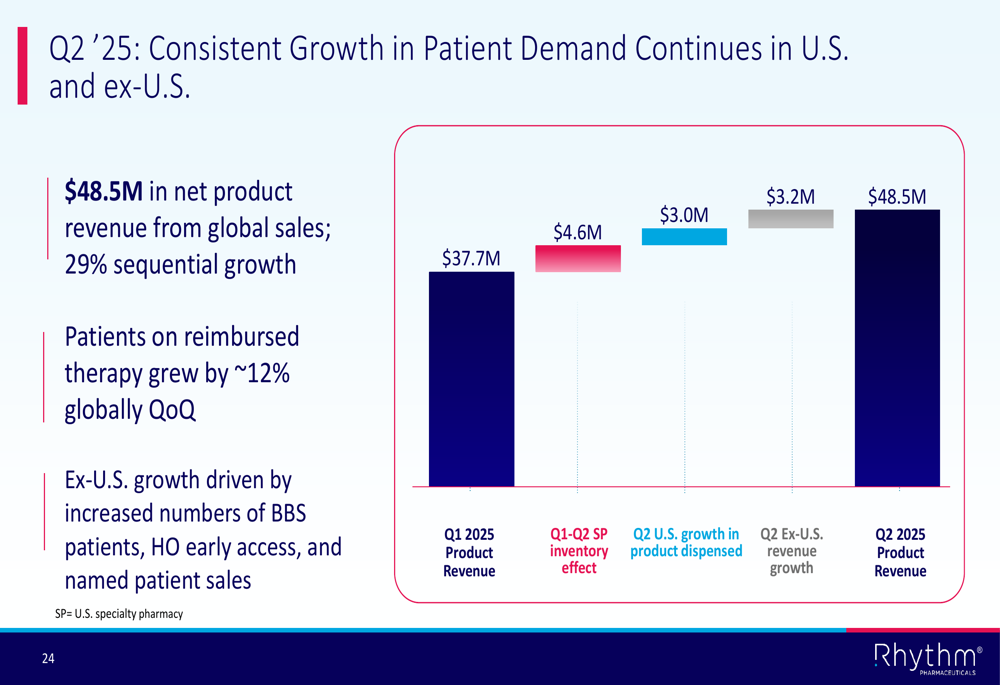
The financial snapshot for Q2 2025 compared to Q2 2024 reveals both revenue growth and increased expenses:
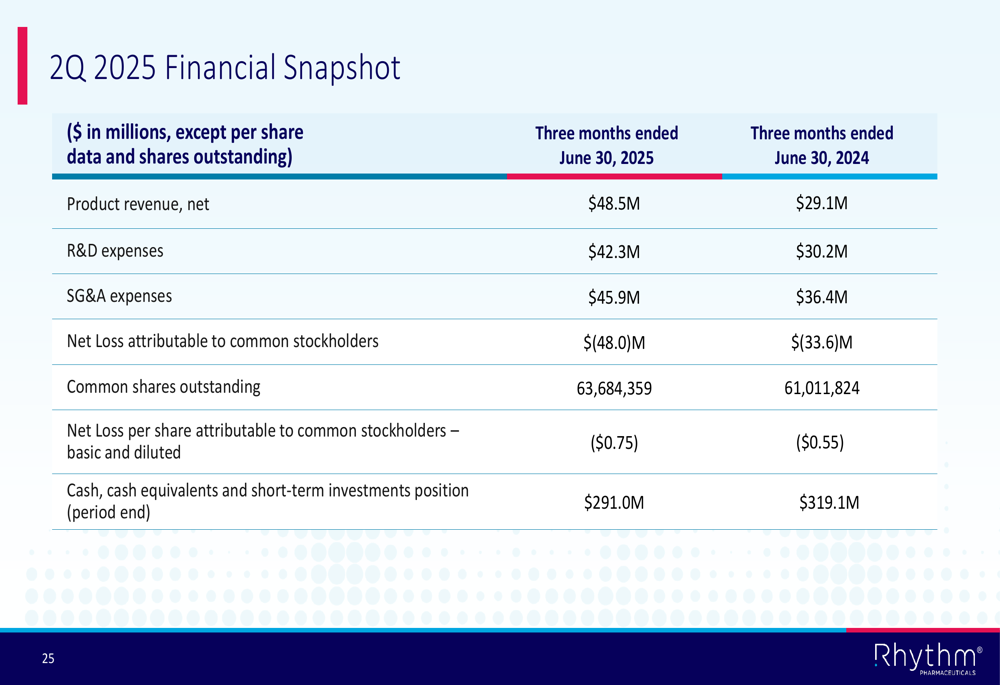
Despite the revenue growth, Rhythm reported a net loss attributable to common stockholders of $48.0 million for Q2 2025, compared to $33.6 million in Q2 2024. This increased loss reflects higher R&D expenses ($42.3 million vs. $30.2 million) and SG&A expenses ($45.9 million vs. $36.4 million) as the company continues to invest in its pipeline and commercial infrastructure.
Financial Position
Rhythm significantly strengthened its financial position through an oversubscribed and upsized stock offering in July 2025. The company reported $291 million in cash, cash equivalents, and short-term investments as of June 30, 2025, and added $189.2 million in net proceeds from the public offering that closed on July 11, 2025.
The following slide illustrates the company’s improved capital position:
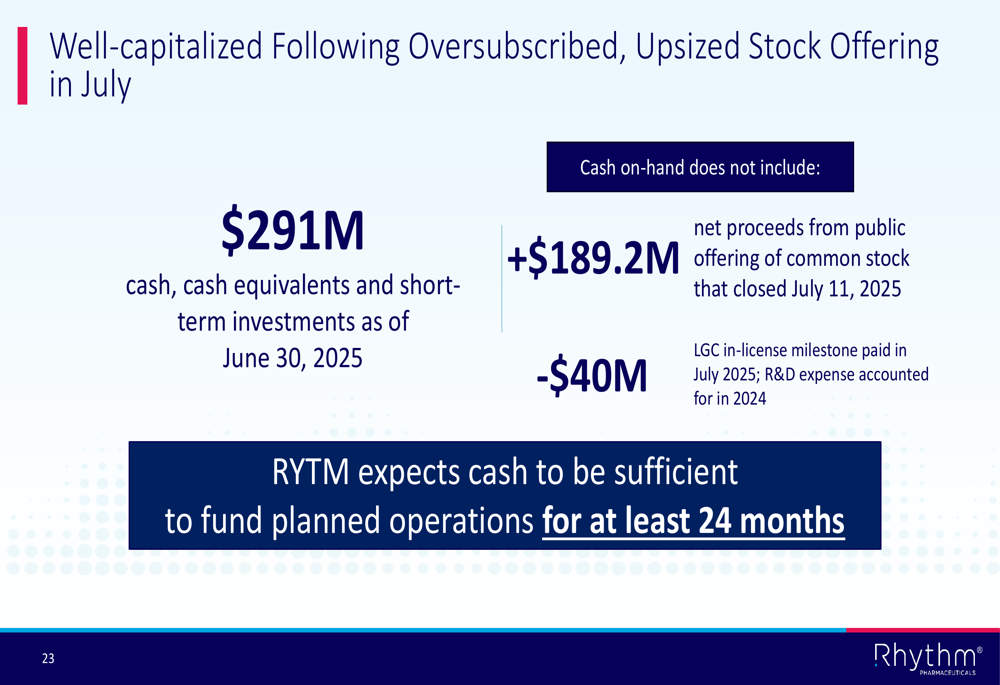
For 2025, Rhythm maintained its operating expense guidance of $285 million to $315 million, including $135-145 million for SG&A and $150-170 million for R&D. The company expects its cash to be sufficient to fund planned operations for at least 24 months.
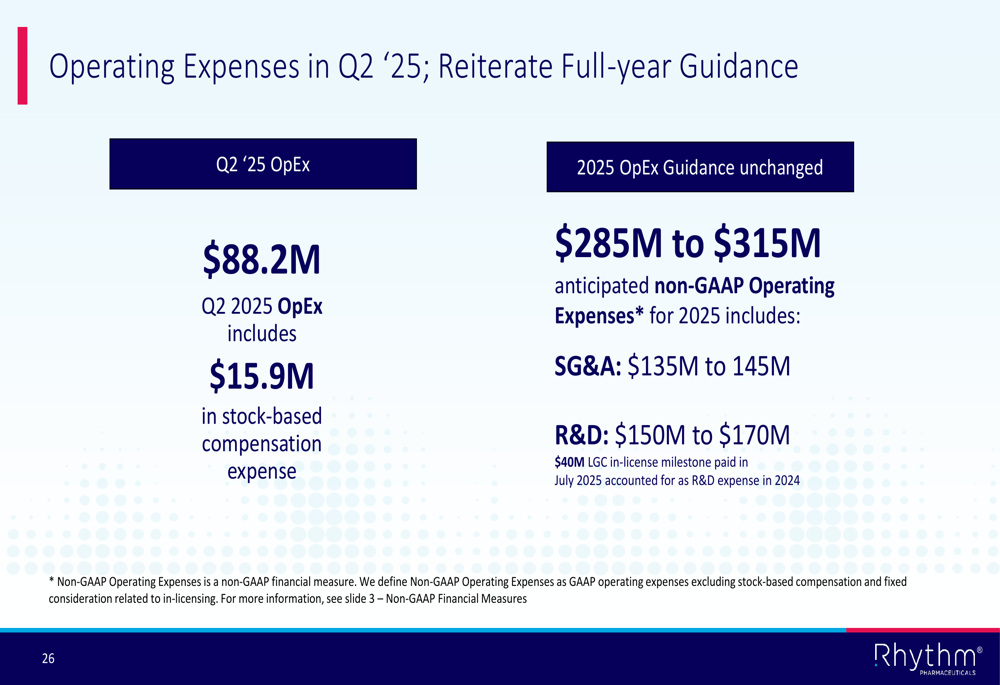
Commercial Progress
IMCIVREE’s commercial performance has been driven by consistent demand growth, increased breadth and depth of prescribers, and growth in prescriptions for pediatric patients. The label expansion to include children as young as 2 years old has broadened physician engagement, with 40% of Q2 2025 prescriptions for patients aged 2-12 years.
The following chart shows the age distribution of IMCIVREE prescriptions:
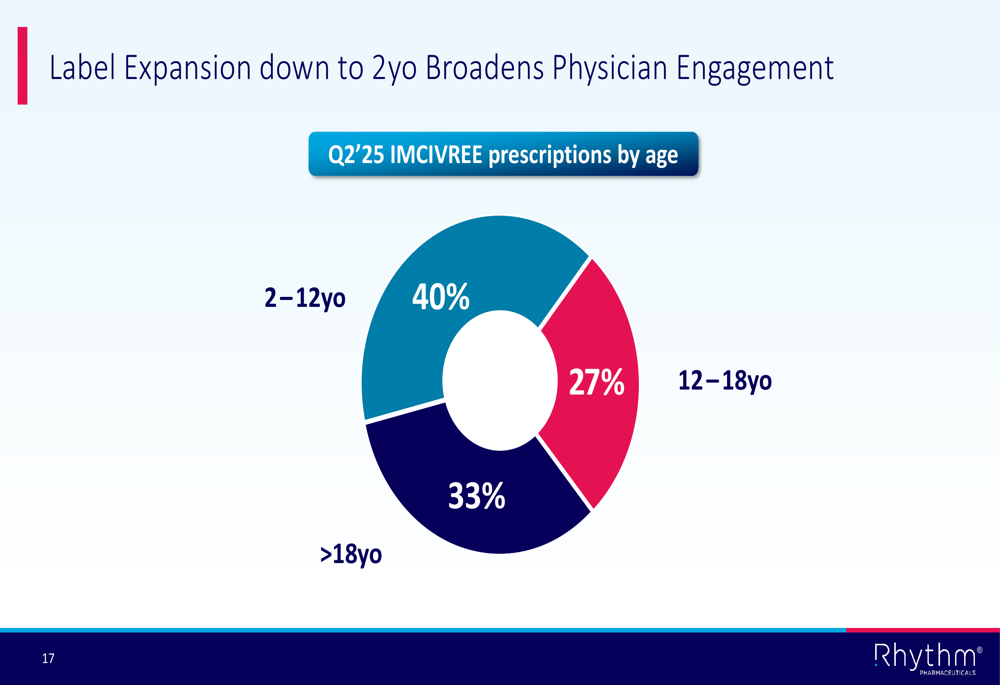
Internationally, IMCIVREE is now available in more than 20 countries outside the United States. Growth in international markets has been driven by increased numbers of Bardet-Biedl syndrome (BBS) patients, hypothalamic obesity early access programs, and named patient sales.
Clinical Developments
Rhythm presented impressive clinical data for both setmelanotide and bivamelagon in treating hypothalamic obesity. In the Phase 3 trial for acquired hypothalamic obesity, setmelanotide achieved a statistically significant 16.5% BMI reduction from baseline compared to a 3.3% increase in the placebo group.
As shown in the following clinical results:
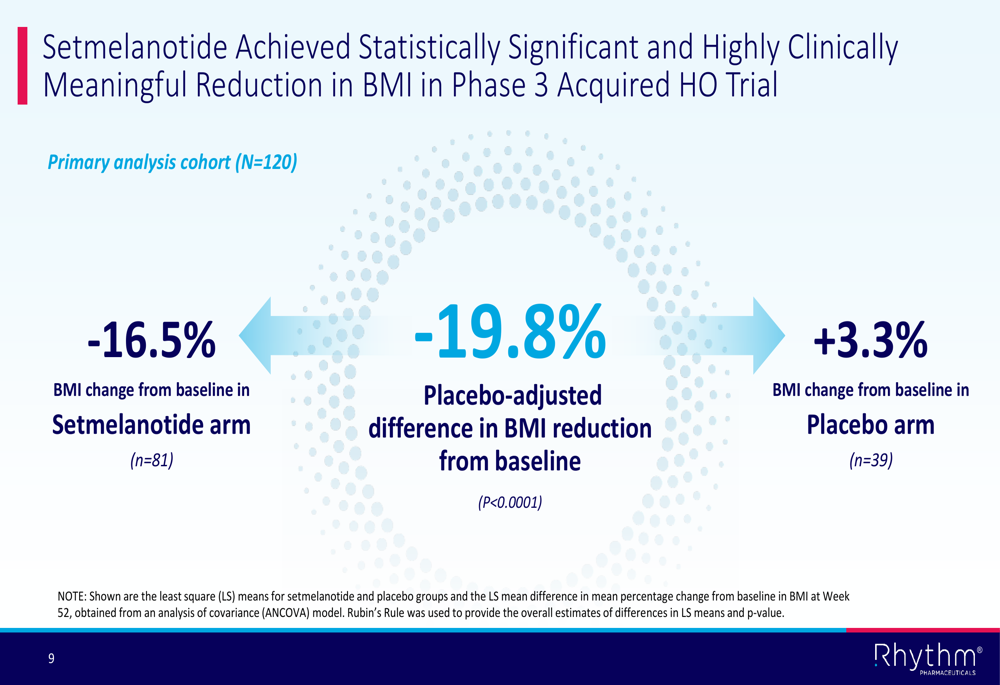
Similarly promising results were seen with bivamelagon, the company’s oral MC4R agonist, which achieved statistically significant BMI reductions in a 14-week Phase 2 trial. The highest dose (600 mg) resulted in a 9.31% mean BMI reduction from baseline.
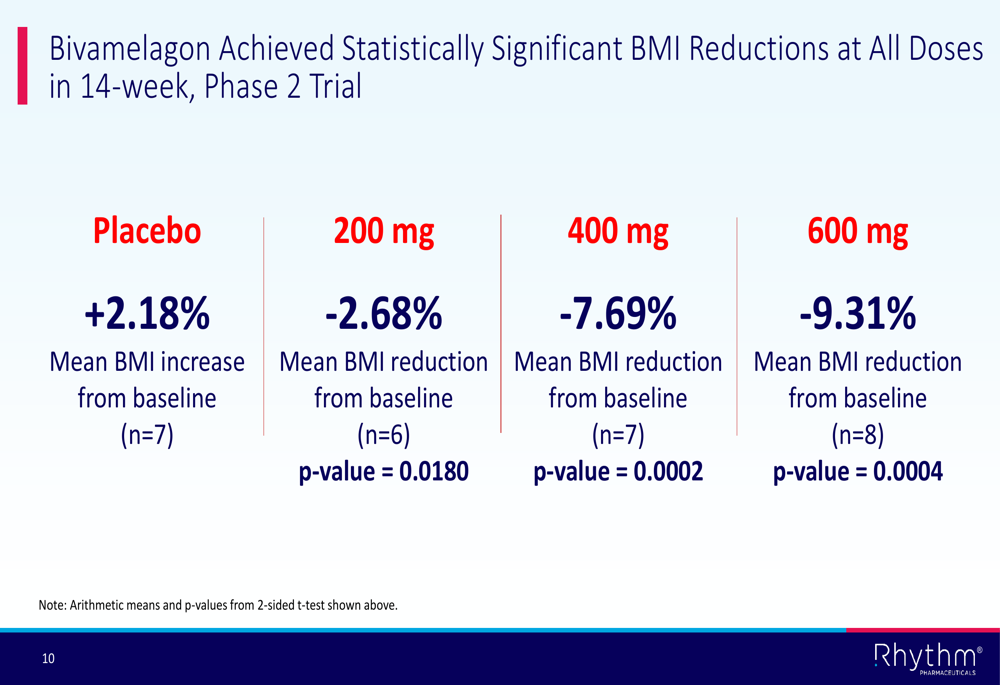
A post-hoc analysis comparing bivamelagon to setmelanotide showed comparable efficacy, with bivamelagon (600 mg) achieving a 10.1% BMI reduction when excluding two patients with documented non-compliance, matching setmelanotide’s 10.1% reduction at week 16.
Market Opportunity (SO:FTCE11B)
Rhythm highlighted the significant market opportunity for its MC4R agonists across multiple indications. The company’s approved indication for IMCIVREE in Bardet-Biedl syndrome represents 4,000-5,000 patients, while the potential market for acquired hypothalamic obesity includes 5,000-10,000 patients in the U.S. alone.
The following slide details the market opportunity across indications:
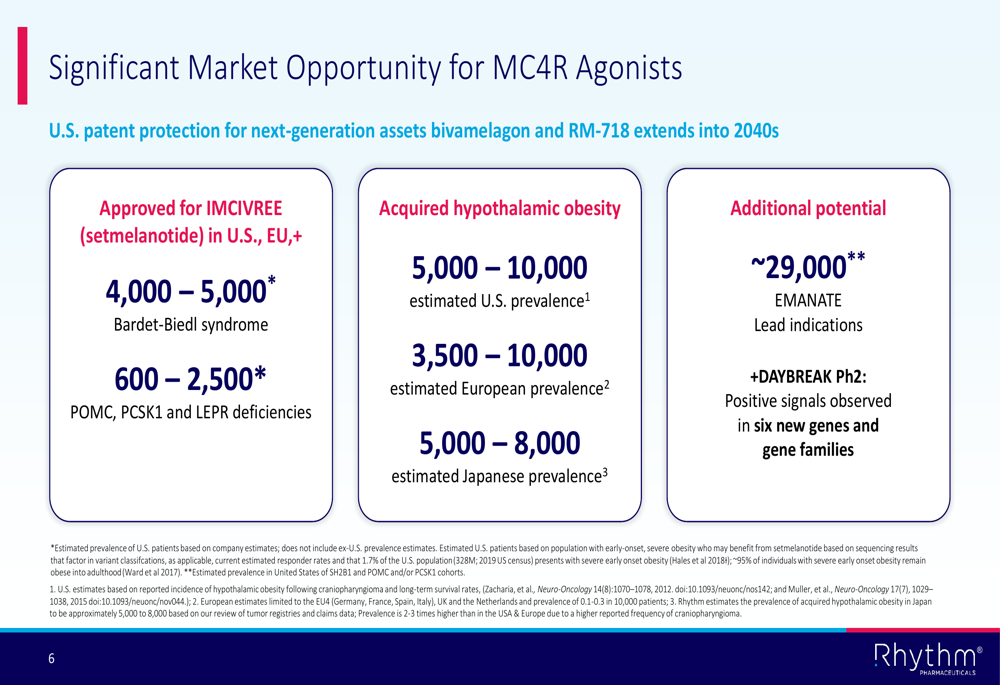
Strategic Initiatives
Rhythm outlined multiple anticipated milestones spanning from Q3 2025 to 2026, including regulatory submissions, clinical trial progress, and data readouts. Key upcoming events include completing U.S. and EU regulatory submissions for setmelanotide in acquired hypothalamic obesity in Q3 2025 and initiating a pivotal Phase 3 trial for oral bivamelagon in 2026.
The company’s roadmap of upcoming milestones is illustrated here:
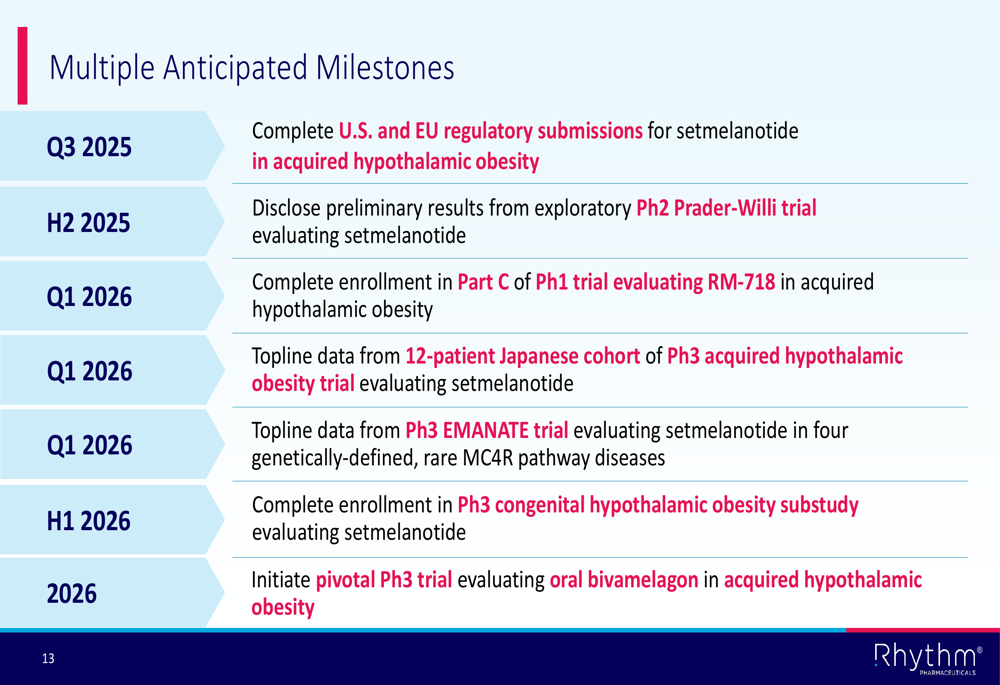
Rhythm also announced an investor and analyst event scheduled for September 24, 2025, focused on the company’s commercial readiness for acquired hypothalamic obesity.
Forward-Looking Statements
Looking ahead, Rhythm is well-positioned to capitalize on its clinical progress and commercial momentum. The company’s long-term growth strategy involves advancing multiple MC4R agonists in several disease states with significant unmet needs. With strong financial resources and a clear development roadmap, Rhythm appears prepared to execute its strategic initiatives through 2026 and beyond.
The recent stock performance, with shares trading near $90, reflects investor confidence in the company’s progress, representing significant growth from the 52-week low of $42.74. As Rhythm approaches key regulatory milestones and potential commercial expansion into hypothalamic obesity, investors will be watching closely for continued execution on both clinical and commercial fronts.
Full presentation:
This article was generated with the support of AI and reviewed by an editor. For more information see our T&C.
